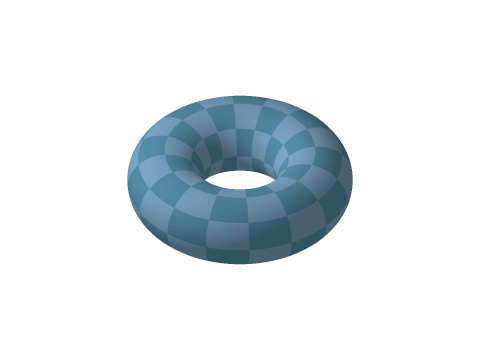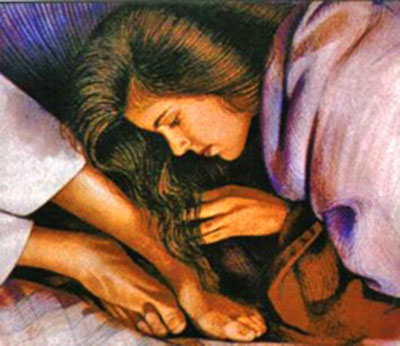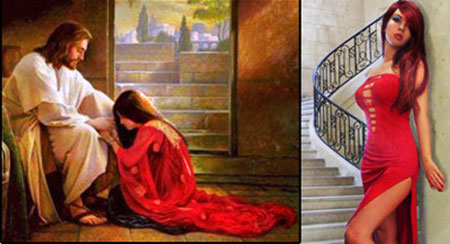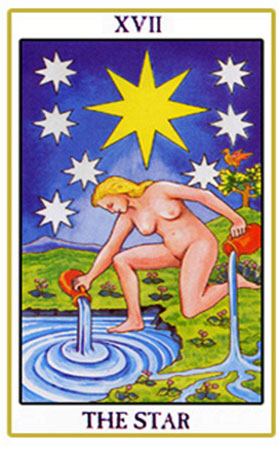|
|
SARA=SERPIENTE=$=ESPACIO/TIEMPO
DINOSAURIO
DINO / DINA / DIANA / DAN (TRANSFIGURACION DE CRISTO EN EL MONTE HERMON EN LA TRIBU DE DAN)
SAURIO / SAR (PRINCIPE EN HEBREO)
LA TRANSFIGURACION DE CRISTO EN EL MONTE HERMON, CERCA DE CESAREA DE FILIPO
C-SAR ES LA CLAVE DE LA TRASLACION EN EL TIEMPO
NOTEN EL NEXO DE DAN, CON LA SERPIENTE (VENECIA) Y EL CABALLO (PLAZA SAN MARCOS)

 
Génesis 8:22 Mientras la tierra permanezca, no cesarán la sementera y la siega, el frío y el calor, el verano y el invierno, y el día y la noche. (EL MISMO DISEÑO DEL VATICANO-OCHO PUNTAS-PLAZA DE SAN PEDRO)
DINERO=MUJER=$=SARA
EL PSEUDOCRISTIANISMO LE TIENE PANICO A LA MUJER.
EN VENECIA ESTA EL SECRETO
|
Obviamente que Dios es Dios de vivos..
Puesto que en la fe nadie muere..
Y los patriarcas Abraham, Isaac, Jacob ..
Caminaron por fe..
Dios le cambio el nombre de abram a abraham..
Porque es el primer viviente según el pacto de la circuncisión..
El primer hombre de fe, el padre de naciones..
Y ese pacto de Dios con Abraham sigue vigente hasta hoy..
Porque en la fe de Abraham son salvas todas las naciones..
Y para dejar tranquilo a Barilochense le digo :
Dios también le cambió el nombre a la mujer de Abraham..
De Saraí ( princesa ) pasó a llamarse Sara que significa madre de naciones..
16. Y la bendeciré, y también te daré de ella hijo; sí, la bendeciré, y vendrá a ser madre de naciones; reyes de pueblos vendrán de ella.
Para que no diga que Dios no ama a sus hijas..
Saludos
El Ungido
LA CLAVE DEL EXPERIMENTO FILADELFIA
EN VENECIA ESTA EL SECRETO
RAMERA=$ =SERPIENTE= SABADO= SABIDURIA= LETRA S= SOPHIA=SNAKE =SERPENT
S=SERPIENTE
68. Juan 4:10 Respondió Jesús y le dijo: Si conocieras el don de Dios, y quién es el que te dice: Dame de beber; tú le pedirías, y él te daría agua VIVA.
69. Juan 4:11 La mujer le dijo: Señor, no tienes con qué sacarla, y el pozo es hondo. ¿De dónde, pues, tienes el agua VIVA?
70. Juan 7:38 El que cree en mí, como dice la Escritura, de su interior correrán ríos de agua VIVA.
|
|
|
|
|
|
|
|
 
  
Hércules (constelación)
De Wikipedia, la enciclopedia libre
Recibe su nombre del héroe mitológico, Hércules y es la quinta en tamaño de las 88 constelaciones modernas. También era una de las 48 constelaciones de Ptolomeo.
[editar] Características destacables
No tiene estrellas de primera magnitud, siendo la más brillante β Herculis con magnitud 2,78. μ Herculis se encuentra a 27,4 años luz de la Tierra. El Ápex solar (punto del cielo que indica la dirección hacia la que se mueve el Sol en su órbitaalrededor del centro de la galaxia) se encuentra en Hércules, cerca de ξ Herculis.
[editar] Estrellas principales
- α Herculis (Ras Algethi o Rasalgethi), de magnitud 3,31, es un sistema estelar triple, cuya estrella principal es una gigante roja variable.
- β Herculis (Kornephoros), la más brillante de la constelación con magnitud 2,78, una estrella gigante amarilla.
- γ Herculis, gigante blanca de magnitud 3,74. Es una binaria espectroscópica con un período orbital de 11,9 días.
- δ Herculis (Sarin), estrella blanca de magnitud 3,12; es una estrella binaria cuyas componentes han sido resueltas por interferometría.
- ε Herculis, binaria espectroscópica de magnitud 3,91.
- ζ Herculis, la segunda más brillante de la constelación con magnitud 2,89, estrella doble formada por dos estrellas amarillas de desigual brillo.
- η Herculis, gigante amarilla de magnitud 3,49.
- θ Herculis, gigante luminosa naranja de magnitud 3,85.
- ι Herculis, subgigante azul de magnitud 3,79; tres estrellas más completan este sistema estelar cuádruple.
- κ Herculis A y κ Herculis B, dos gigantes que forman una doble óptica.
- λ Herculis (Maasym), gigante naranja de magnitud 4,40.
- μ Herculis, sistema estelar cercano que dista del Sistema Solar 27,4 años luz.
- π Herculis, gigante naranja de magnitud 3,16.
- ρ Herculis, estrella doble cuyas componentes, separadas 4 segundos de arco, brillan con magnitud 4,56 y 5,42.
- τ Herculis, estrella B pulsante lenta (SPB) con una tenue compañera a 7,6 segundos de arco.
- χ Herculis, enana amarilla de baja metalicidad que se encuentra a 52 años luz de distancia.
- ω Herculis (Kajam), de magnitud 4,57.
- 8 Herculis, estrella blanca de magnitud 6,13 que forma una doble óptica con Kappa Herculis —separación 0,2º—.
- 14 Herculis, enana naranja a 59,2 años luz con una enana marrón o planeta gigante alrededor. En 2006 se descubrió un posible segundo compañero, aún sin confirmar.
- 30 Herculis (g Herculis), gigante roja y variable semirregular cuyo brillo oscila entre magnitud 4,3 y 6,3 en un ciclo de 89,2 días.
- 68 Herculis (u Herculis), binaria eclipsante en donde existe transferencia de masa desde la secundaria hacia la primaria.
- 72 Herculis (w Herculis), enana amarilla similar al Sol a 47 años luz de distancia.
  
ISLA SAN GIORGIO (VENECIA)=GEORGE LEMAITRE
GEMATRIA EN INGLES DE SEED=33
GEMATRIA EN INGLES DE GATE=33
SARA (CE-SAREA DE FILIPO)=PARALELO 33
"¡Oh profundidad de las riquezas de la sabiduría (sophia)
y de la ciencia (gnwsiV, gnosis) de Dios!
¡Cuán incomprensibles son sus juicios, e inescrutables sus caminos!"
(Romanos, 11: 33).
25 DE ABRIL=DIA DE SAN MARCOS
22 DE JULIO=DIA DE MARIA LA MAGDALENA
|
|
|
|
|
 
|
4. SCALA CONTARINI DEL BOVOLO: 45.434838, 12.334694
Ya aviso que no es nada fácil de encontrar, de hecho, es uno de esos rincones que pasan totalmente desapercibidos a menos que sepas de su existencia. Normalmente, todos los palacios tienen dos entradas, una principal que da hacia el Gran Canal y que es más espectacular, y otra secundaria que era usada por el servicio. Pues bien, este es de los pocos palacios en los que su entrada secundaria es casi más bonita que la principal, todo gracias a una maravillosa escalera de Caracol que hace las delicias de los descubridores viandantes (Bovolo significa Caracol).
Cerca de este Palacio se encuentra el famoso teatro de La Fenice, donde han sonado las Óperas italianas más importantes de la historia.
|
|
|
|
|
|
SCALA CONTARINI DEL BOVOLO
Escondida en un laberinto de calles y canales, a pocos pasos de Campo Manin, en uno de los principales itinerarios turísticos venecianos, surge una joya arquitectónica caracterizada de un estilo entre renacimental (por la utilización de algunos elementos), gótica (por la técnica de costrucción) y veneto-bizantina (por la forma): la Scala Contarini del Bovolo.
La escalera a espiral más importante y prestigiosa de Venecia, fue encargada su realización por Pietro Contarini a finales del 1400, con el objetivo de decorar la fachada del colindante Palazzo San Paternian de propiedad de la ilustre familia veneciana.
La realización de esta ópera, no tenía al inicio un verdadero motivo funcional, consistía simplemente en un acto de prestigio, se buscaba únicamente aumentar la popularidad y prestigio del clan familiar.
La creación de la escalera ha tenido una resonancia tan fuerte que llevó a la ciudadanía a dar un nombre característico a la familia, como “Contarini del Bovolo” (por la forma particular de la escalera a forma de caparazón de caracol, que en veneciano se dice “bovolo”).
El pórtico en el segundo piso de la Scala del Bovolo conduce a una sala prestigiosa del Palazzo Contarini (Sala del Tintoretto) en donde se encuentran expuestas las obras provenientes de la colección de arte del IRE, que está constituída de pinturas, esculturas y objetos de un significado importante de época veneciana con los más ilustres protagonistas del panorama artístico veneciano del 1500 al 1700.
Cerrado:
1 de Enero, 15 agosto, 1 noviembre, 25 y 26 diciembre.
Cierre extraordinario: 9 abril de las 10:00 a las 12,30
La ventanilla cierra 30 minutos antes de que cierre el museo.
Precios
- 7€ Entero
- 6€ Reducido: Menores de 26 años, Mayores de 65, Socios FAI
Gratuito:
- Menores hasta12 años
- Guías Turísticas autorizadas
- Residentes en Venecia (con documento de reconocimiento y residencia)
- Dependientes IRE y Fundación Venecia Servicios a la Persona
Las entradas gratuitas deben ser adquiridas en la ventanilla. No se pueden reservar. Reservación obligatoria para grupos de más de 10 personas.
https://www.todayinvenice.com/es/exposiciones-y-museos/museos/scala-contarini-del-bovolo/502/2018-06-27 |
|
|
|
|
|
|
|
1. Génesis 28:12 Y soñó: y he aquí una ESCALERA que estaba apoyada en tierra, y su extremo tocaba en el cielo; y he aquí ángeles de Dios que subían y descendían por ella.
2. 1 Reyes 6:8 La puerta del aposento de en medio estaba al lado derecho de la casa; y se subía por una ESCALERA de caracol al de en medio, y del aposento de en medio al tercero.
3. Ezequiel 41:7 Y había mayor anchura en las cámaras de más arriba; la ESCALERA de caracol de la casa subía muy alto alrededor por dentro de la casa; por tanto, la casa tenía más anchura arriba. Del piso inferior se podía subir al de en medio, y de éste al superior.
| Reply |
Message 89 of 90 on the subject |
|
|
|
|
| Reply |
Message 90 of 90 on the subject |
|
|
|
|
|
|
|
|
|
|
|
AÑO DEL QUINTO CENTENARIO DE LA CAIDA DE LOS CATAROS
MONTSEGUR/MOON/ MONTE HERMON/TRANSFIGURACION



Statue of Liberty
The height of the Statue of Liberty is 111′-1″ from bottom of foot to top of head. The 7 rays on the crown and the 11 points of the base star echo the proportions of the Great Pyramid’s 7:11 height to base proportion. The superb book Talisman by Graham Hancock and Robert Bauval convincingly shows this goddess is actually the Egyptian Isis.

Image courtesy Elcobbola under the Creative Commons Attribution-Share Alike 3.0 Unported license.
http://www.viewzone.com/onstott66.html

MONTSEGUR VOLCAN/CAN / TEOTIHUACAN / VATICANO / CANA/ AMERICAN/ MEXICAN/ CAN MAYOR (SIRIO)- BODAS DE CANA
Location
Montségur is in the Ariege, in the foothills of the Pyrenees, not far from Lavelanet, due South from Mirepoix.
Montségur lies at 42°52'35" N, 1°49'51" E on a pog (a volcanic pluton) at an altitude of 1,207 meters. The castle is owned by the Commune of Montségur. There is an entrance fee, which also covers entry to a museum in the nearby town.
Guided Tours
Cathar Castle Tours
Mairie: mairie.montsegur@wanadoo.fr
Tel: 05 61 0110 27
Tourist Information Office:
Tel: 05 61 03 03 03


|
|
aerial view of Montségur
|
 |
|
MARIA MAGDALENA EN EL CATARISMO (CATAROS)
25 DE ABRIL=DIA DE SAN MARCOS
22 DE JULIO=DIA DE MARIA LA MAGDALENA
MASON FRANCES
|
|
|
|
|
 Aqui tenemos a Pi - la circunferencia del toro y la vesica piscis 256/153 equivalente a la raiz cuadrada de 3 En el hipercubo las coordinadas binarias de Piscis son decimal 3 y binario 11 153 los pescados de Jesus en la biblia
|
|
|
|
|
“The most effective way to destroy people is to deny and obliterate their own understanding of their history.”
---- George Orwell
My own reproduction of the Templar relics in the form of a female silver head containing a couple of skull bones of a small woman with the word Caput LVIII M.
Templar Foundations
A Templar ship
Brass Plate
Magdalene Vault
During my past life regression along with my spiritual portrait, my research on Mary Magdalene and my conversations with various mediums and historians there is one group of people who keep cropping up time and time again, The Knights Templar.
The Templars were founded around the year 1118 as an order of fighting monks whose job was to protect the pilgrims visiting the Holy land. It must be noted here however that no evidence has suggested the Templars actually carried out this particular task. Moreover, there have been suggestions their actual task was for something else like excavation work. It’s also important to note that the order began with only nine members for the first nine or so years which would have made it very difficult to cover all pilgrim routes to the Holy land.
By 1127 the Templars had established themselves in Western Europe with countries including Portugal, France, England and Scotland. The church had even officially recognized them as a religious order dedicated to the defence of Christendom. Further down the line in 1139, a papal bull was issued that the Templars would owe allegiance to the pope only, making them immune to political and religious authorities.
Sophia
Old antique Templar pendant
Magdalene Vault
However during the latter part of the 12th century the Templars were facing serious problems. The Templars enormous wealth and influence which had built up over a number of years brought them into growing opposition to the Church and worldly monarchs. The Knights Templar were accused of many heinous crimes including denial of an immortal Christ, ritual murders and of worshipping a bearded head called Baphomet to name but a few.
It all came to a head in 1307 on Friday, October 13th, Jacques de Molay, Grand Master of the Templars and sixty of his Knights were imprisoned in Paris. In 1312 the pope officially dissolved the Knights Templar Order and then in 1314, after Jacques de Molay was burned alive, it seemed that the Knights Templar had ceased to exist, yet the Order continued in other countries under various names.
The Templars venerated Mary Magdalene and to them she represented Sophia, the female side of god. The word Sophia means “wisdom” and many people believe Sophia came to earth in the body of Mary Magdalene herself. During the Templars inquisition, one accusation amongst many was the worshipping of a goat head called “Baphomet”. It was not apparent why the Templars would worship such a thing until you apply something called the Atbash Cipher. This code was used as early as 500BC and was found to be used in some of the Dead Sea scrolls. When applied to the name Baphomet we get the name Sophia!
Relic and Cathars
Antique engravings from an old french book showing scenes from the Cathar crusade at Montseguer & the massacre at Beziers.
Magdalene Vault
Whilst on the subjects of heads, the Templars also had in their possession an interesting relic in the form of a female silver head containing a couple of skull bones of a small woman. It also came with a label on which read the following; Caput LVIII M (Head 58M). At first glance the message is a just a random few numbers and a letter but when you add five with eight you get thirteen. The letter M is the thirteen letter of the alphabet and together with the other M we have a double hit. Could this female relic have been the bones of Mary Magdalene? It is also noteworthy that the bones themselves were wrapped in a red cloth, the colour most associated with Mary Magdalene.
With the worship of Sophia through the disguise of Baphomet along with the 58M female headed relic we can possibly assume that the Templars regarded the importance of Sophia and acknowledge her human existence in the form of Mary Magdalene. It would not be the first time that both Sophia and Mary Magdalene have had a connection. In one Gnostic Gospel called The Pisits Sophia, Mary Magdalene plays a central role. It contains 46 questions in the dialogues of which 31 are asked by Mary Magdalene herself.
The Templars also had a connection with the Cathars, a Christian dualist or Gnostic movement which arrived in France around the 12th century. Like the Templars, they held Mary Magdalene in very high esteem calling her the femine aspect of the divine and recognised her equal status with Jesus. It is also known that at least one of the nine founders of the Templars was a Cathar. The 4th grand master of the Templars, Bertrand de Blanchefort was from a Cathar family.
Cathar Templar connection
Old St Mary Magdalene Relic
The Magdalene Museum
Another question which arises is why this particular area in the south of France is the focal point for both the Cathars and Templars. Could it be argued that the Magdalene arrival in France after the crucifixion set the motion of the events that followed? It is most likely that the Cathars had in their possession Gnostic Texts amongst their many other documents and may have had knowledge of the Magdalene voyage itself.
I strongly believe that the Templars were set up or influenced by the Cathars themselves with the objective to befriend the Church and gaining their trust, a kind of double agents type. One of the nine founding members, Hugues de Pagens, had ties with many Cathar people and possibly had been a Cathar himself. Indeed his genealogy points to Cathar heartland and another member, Godfrey de Saint-Omer appears to have been a relative of his. Their mission to protect the pilgrims from the holyland had simply been a “smoke screen” for their main intentions and activites.
Being just a normal Cathar would simply have got them nowhere, even before the Templar establishment they were already being hounded out including the burning at the stakes of Cathars in Orleans in 1022. They already had in their possession gospels and documents of Gnostic nature and more than likely had the Magdalene relics too. There was far more to be discovered in the Holyland which they could attain and keep. Also the Cathars knew the church at one point would come down hard on them, it was just a matter of time. What the Cathars needed was an army of knights to gain entry into the holyland and then to guard their sacred documents, relics and even their own beliefs and history.
Genocide
Templar Postcard, Temple London
Magdalene Vault
In 1208 began a series of wars known as the Cathar crusade which was organised and directed by the Catholic Church on the orders of Pope Innocent lll. From the first seize in Beziers on July 22nd 1209 (St Mary Magdalene’s feast day), to the last Cathar foothold at the Chateau of Montsegur, the Cathars were hounded out, burned at the stake and slaughtered in what many people call the first genocide of Europe.
During the crusades against the Cathars, the Templars had no choice but to remain neutral. If they sided with the Catholic Church then they would be fighting against their own people, against similar beliefs and even possibly their own families. On the other hand if they sided with the Cathars then it would put the order at risk and everything they protected including their connections with the “heretics” along with sacred documents and treasures would be revealed. The only logical thing to do was to stay neutral although it has been reported that the Templars did provide a haven for Cathar refugees and the increase of Cathars which joined the Templar ranks at that period of time rose sharply.
At the last stronghold of Cathars at Montsegur in 1244, a few Cathars did manage to escape the oncoming slaughter and with them they carried some form of treasure. It could well be that these Cathars and their treasure, ended up with the Templars and thus their treasure were safe and protected……...for now.
Fall of the Templars
Postcard
Port of La Rochelle, France
In the aftermath of the Cathar crusade the Templars remained protected and their influence and wealth was still growing. However by the turn of the 14th century the Templars had also attracted many powerful enemies, one of whom would lay the first stone to the demise of the Templar order, or at least, so he thought. Philippe lV of France had become envious and angry with the Templars, he owed them a great deal of money, thought they were arrogant and unruly ,no control was over the Templars as they only answered to the pope and all this on Philippe’s own territory. This all gave reason for Philippe to use heresy as an excuse to get rid of the order.
After the kidnapping and subsequent death of Pope Boniface Vlll along with the poison of another, namely Benedict Xl, Philippe conveniently secured the election of one Clement V, who was at the time archbishop of Bordeaux. This allowed Philippe to get what he wanted, the suppression of the Templars because after all, Clement V was indebted to him for making him pope.
From that moment on the Templars had become wanted men and many were tortured and interrogated on October 13th, 1307. Philippe may have quashed the Templars but their treasure had eluded him, nothing was found. It is more than probable that the Templars knew of this impending danger and took their treasure of wealth, sacred documents and relics and sent them to their naval base at La Rochelle were they transported all this onto around eighteen galleys ready to disembark. What happened to those ships remains a mystery, maybe some ended up in Portugal or more so to Scotland, the only monarchy in the 14 century Europe that did not recognize the authority of the Catholic Church.
Meanwhile the Templars were officially dissolved in 1312, despite the lack of evidence and information that Philippe had accused them of. In 1314 the grand master if the Templars, Jacque de Molay was roasted to death over a burning fire. Philippe had even gone to lengths after to persuade other monarchs to follow his lead to make sure no Templar survived but this mainly fell on deaf ears, particularly in Scotland. Philippe himself died of mystery causes at the end of 1314, the same year as he ordered the death of Molay. Indeed one month after the burning of the grand master, Pope clement was dead. It was reported that Molay had called his persecutors to join him before God’s court within a year while he was about to be burned!
http://www.midnightmagdalene.co.uk/428802766 |
|
|
|
|
Posted on Apr 28, 2019

On March 19, 2109 The Galaxy reported that China was close to launching its “artificial sun” promising a future of ‘limitless clean energy –a Chinese “Green New Deal”. Unlike nuclear fission, fusion emits no greenhouse gases and carries less risk of accidents or the theft of atomic material.
Sometimes called an “artificial sun” for the sheer heat and power it produces, China’s doughnut-shaped Experimental Advanced Superconducting Tokamak (EAST) that juts out on a spit of land into a lake in eastern Anhui province, has notched up a succession of firsts, reports AFP. Officials announced that the machine which will hold the ‘artificial sun’, called the HL-2M Tokamak, could be built this year using nuclear fusion in which hydrogen from sea water and readily available lithium is heated to more than 150 million°C.
The current Experimental Advanced Superconducting Tokamak (EAST) reactor in Hefei has created temperatures as hot as the interior of the sun. In November, it became the first facility in the world to generate 100 million degrees Celsius (212 million Fahrenheit)—six times as hot as the sun’s core. These mind-boggling temperatures are crucial to achieving sustainable nuclear fusion reactions, which promise an inexhaustible energy source.
“Stupendous” –China’s Leap to Space-Based Solar Power: ‘Will Beam Sun’s Energy Back to Earth’
“The artificial sun’s plasma is mainly composed of electrons and ions and the country’s existing Tokamak devices have achieved an electron temperature of over 100 million degrees C in its core plasma, and an ion temperature of 50 million C, and it is the ion that generates energy in the device,” said Dr Duan Xuru, an official at the China National Nuclear Corporation, according to China’s Global Times.
HL-2M Tokamak is expected to increase the electricity intensity from one mega amperes to three mega amperes, an important step to achieve nuclear fusion, a spokesperson surnamed Liu with the press office of the Southwestern Institute of Physics (SWIP), affiliated with China National Nuclear Corporation, told the Global Times.
“The Milky Way Base” –China Names First Human-Technology Landing Site on Moon’s Far Side
For instance, the deuterium (also known as heavy hydrogen) extracted from one liter of seawater releases the energy equivalent of burning 300 liters of gasoline in a complete fusion reaction, Liu said.
The “artificial sun” aims to release nuclear fusion in the same way as the sun by using deuterium and tritium (radioactive hydrogen-3), and finally generate electricity. It is clean energy that will not generate waste, which makes it ideal for people to use in the future, Liu said.
https://dailygalaxy.com/2019/04/earths-second-sun-chinas-fusion-future-the-holy-grail-of-unlimited-energy-weekend-feature/
|
|
|
|
|
Magdalena y María de Betania

Tradicionalmente, la Iglesia Católica Romana ha identificado a María Magdalena con María de Betania, la hermana menor de Lázaro.
Es otra de las grandes barbaridades entorno a este personaje. María de Betania fue un dulce ser de Luz protagonista de una de los episodios más bonitos de todo el Nuevo Testamento.
Un episodio que respira amor por cada una de sus sílabas, sobre todo si conseguimos conectar con ese amor tan puro que se vivió en ese instante.
"María, pues, tomó una libra de perfume muy caro, hecho de nardo puro, le ungió los pies y se los secó con sus cabellos, mientras la casa se llenaba del olor del perfume."
(Jn, 12:3).
Esa libra de perfume que María usó en sus cuidados al amado Jesús, mejor dicho el frasco que la contiene, ha sido la perdición de la dulce María de Betania, pues se ha confundido con el frasco de alabastro que acompaña siempre a Magdalena, la "Ampolla Sagrada" de los Merovingios.
Ya entonces, ungir a Jesús con el caro contenido del frasquito le valió la reprimenda de Judas por no utilizarlo en ayudar a los pobres y ahora, por culpa del jodido frasquito, María de Betanía, que tanto quería a Jesús, ha pasado a ser María Magdalena que también quería... destruir... a Jesús, como veremos a continuación.
Una vez más, un ser de luz suplantado por un enviado de la oscuridad... el pasatiempo favorito del OO, Origen de la Oscuridad en el planeta.
Magdalena y Lady Gagá

Dos fotos de Lady Gagá imitando a
su heroína María Magdalena, ya se sabe entre poseídas...
Poco a poco vamos descubriendo un lado oscuro y hermético de Magdalena que nos acerca poco a poco a su verdadera identidad.
En un último acercamiento, vemos a una de las más famosas devotas de la santa hoy en día, a la que ya hemos visto saliendo del "Huevo Primigenio" en la gala de los Grammy.
De estar entre nosotros, Jesús ya habría sacado a Lady Gagá los siete demonios que sacó a MM, más otros cincuenta, por lo menos.

Y eso nos lleva a conocer ya quién era realmente esa mujer que ha dado tanto que hablar a lo largo de la historia.
Un baño de realidad
Una de las maniobras que la oscuridad ha venido intentando siempre para neutralizar la presencia de seres de Luz (o de muy alta vibración), es rodearles de seres bien oscuros, o de muy baja vibración.
Son seres que a menudo están conectados con entidades astrales, lo que se ha venido a llamar demonios o directamente con los falsos diositos sumerio-Anunnakis.
La mayoría de veces sin tener consciencia de ello.
Para desactivar la amenaza de un ser de Luz tan potente como "Jesús", se envió a un nutrido grupo de seres oscuros.
Desgraciadamente hay que decir que la gran mayoría de apóstoles formaba parte de él. Pero la "operación" Jesús" era una gran apuesta y desde luego no estaba sólo, también un grupo de seres de Luz le acompañaron y protegieron.
Y entre este equipo no estaba precisamente María Magdalena, ya que ella era en realidad la "infalible" arma secreta que la Oscuridad tenia preparada. De hecho a María Magdalena se la representa siempre vestida de rojo, el arquetipo de la "mujer de rojo", una mujer que ante todo es peligrosa por cautivadora.
Por eso pone los pelos de punta pensar en las teorías que aseguran que ambos eran esposos...! y tuvieron un hijo...! y encima lo promulgan como si fuera algo tan bonito y amoroso.
Y Jesús por enésima vez rasgándose las vestiduras...
Nota: Los tres apóstoles señalados.
Como ya hemos dicho, Leonardo dejó una información en el cuadro de "La Última Cena".
Tres de los apóstoles están representados con un aspecto femenino, diferente a los demás y son ninguna razón histórica para ello. Son Santiago el Menor, Juan el Amado (María Magdalena según algunos) y Felipe.
Leonardo, un genio conectado con la Fuente como pocos, les pintó así no porque conociera sus personalidades sexuales, sino porque sabía que Juan, Santiago y Felipe eran los tres únicos apóstoles que realmente eran de Luz, y quiso dejarlo "escrito" de forma encriptada para quién pudiera entenderla.
Lo siento Dan Brown, otra vez te has quedado a las puertas de la Verdad.
La mayoría de apóstoles y la propia Magdalena fueron uno de los muchos obstáculos que Jesús tuvo que superar en su propósito, pero ¿que era lo que hacía a María Magdalena tan peligrosa?... ¿encantos de mujer?
No, no caigamos en el tópico de la mujer pecadora, ni en lo de la tentación de la carne.
Lo que hacia peligrosa a Magdalena ya nos lo dijo la Biblia, en las pocas palabras que destina a María Magdalena. En Lucas 8:1-3 se nos dice que "Jesús le expulsó siete demonios" (otro vez el nº mágico de las siete Pleyades)
Es evidente, si hubo que sacarle demonios es que estaba poseída.
Sí, María Magdalena solía ser poseída por Ishtar, la más oscura y la más puta (la llaman la "Puta de Babilonia").

Mujer de rojo, prostituta sagrada, "Diosa Madre", sacerdotisa...
Los Anunnakis que se hicieron pasar por dioses, poseen una tecnología muy diferente a la nuestra. Algunas cosas muy familiares para ellos son para nosotros desconocidas y a menudo nos tenemos que referir a ellas como "magia".
Ellos no han centrado su evolución hacia conseguir los Ipads más delgados, sino hacia dominar la Energía.
Para ellos, cosas como moverse en astral, cambiar de dimensión, abrir un lazo con otra persona para controlarla o incluso entrar en su interior - poseerla - es algo tremendamente fácil. Quién haya visto como un ser cercano se transforma repentinamente y como sus pupilas se ennegrecen - literalmente - sabe que esto no es ni broma, ni ciencia-ficción.
Puedes creerlo o no, pero esto no va a hacer que esta realidad deje de existir. Esto es real y esto es lo que le ocurría a María Magdalena, una posesión a tiempo parcial, que explica porque tiene tantas facetas, la mayoría heredadas del ser que la poseía.
Ahora ya sabes porque el título de este artículo es "Bajo el signo de Ihstar".
Bajo el signo de Ishtar se encuentran los días finales que nos ha tocado vivir, días en que sus capataces Jesuitas ocupan la cima del poder en la mayor iglesia, y en los mayores bancos del planeta.
Recuerda que a Ishtar, en su faceta de Virgen de Fátima, le fue entregado el Mundo en el gran ritual del 13 de octubre de 2013 en que además su activó la "Solución Final" para los seres de Luz.

La carta de Tarot de "La Estrella" que bien podría ser
el signo zodiacal de Acuario.
Y la mujer con cántaros que podría ser Magdalena
y su inseparable frasco de alabastro.
La razón de este titulo, Magdalena aparte, es que los sumerio-Anunnakis dejaron pactado y sellado que a su regreso en la nueva era de Acuario, Ishtar sería quién gobernaría el mundo, junto a su esposo Mitra.
Fue la solución diplomática que contentó a los dos linajes en conflicto eterno, el de Enki y de Enlil.
Por eso la carta de tarot de "La Estrella" es en realidad Ishtar, representada por la estrella de ocho puntas que le pertoca en la jerarquía Anunnaki y por una mujer y dos cántaros, una escena que bien podría pertenecer al signo de Acuario, el signo de la era en que ella, la ambiciosa, podrá por fin gobernar.
O no...
https://www.bibliotecapleyades.net/sumer_anunnaki/esp_sumer_inanna01.htm |
|
|
|
|

rosarioporlavida.ning.com
Amo a los Dos Corazones!
480 × 340 - 42k - jpg |

fotomontajesgratis.co
Buscador
500 × 400 - 239k - jpg |

salesianos-bernal.com.ar
a tu Inmaculado Corazón
720 × 541 - 94k - jpg |

yotudiostellama.blogsp...
Sagrado Corazón de Jesús e
349 × 274 - 32k - jpg |
|
|
|
|
|
| De: Rolmen |
Enviado: 18/05/2019 02:55 |
|
|
|
|
|
le, require a straining of the available evidence. Sometimes, it is more appropriate to simply accept that we just don’t know.
Put another way, if time past is a jigsaw puzzle and we only have a handful of pieces, we shouldn’t assume that the ones we do have fit together perfectly. That said, it would be cowardly not to at least to attempt to rearrange the pieces we do have about the witness who wrote the Gospel of John to see if they fit together in some other coherent way.
In our quest to establish the authorship of John’s Gospel we identified a number of possible candidates in the attempt to solve the Problem of John. We have considered and ruled out John the Apostle, John the Elder (a non-direct follower of Jesus) and the Johannine Community. As promised, I suggest a fourth: John Mark, described in Acts 13:5 as a hyperetai — in recognition of his qualification as a scribe or minister of the Word.
We know the following about John Mark from the New Testament:
- His mother Mary owns a large house in Jerusalem. This house plays host to “many believers” after the arrest of Peter (44AD); Acts 12:12
- He was a missionary with apostles Barnabus and Paul in Antioch, assisting as a scribe or minister of the Word; Acts 12:25
- After the trip to Pamphylia, he returns to Jerusalem (45AD); Acts 13:13
- His decision causes Barnabus and Paul to separate (49AD); Acts 15:37
- Barnabus and John Mark set sail together for Cyprus (49AD); Acts 15:39
- John Mark, Barnabus’ cousin, is with Paul in Rome and is anticipated to return to Asia Minor to minister there (60AD); Colossians 4:10
- John Mark is with Timothy in Ephesus (67AD); 2 Timothy 4:11
From these details, it is traditionally believed that John Mark:
- was a young man or adolescent at the time of Jesus’ death;
- was younger in relation to the Apostles Peter, James and John, Paul and Barnabus;
- was part of a family who had a large house in central Jerusalem that likely hosted the Last Supper;
- his family having wealth, he was likely trained as a Jewish scholar, and so would be more likely known amongst the Council of Jerusalem.
Of the four inferences drawn above, the first two are almost certain, and the second two are reasonable, if not conclusive, assumptions.
So, does John Mark fit the profile of the internal evidence — the information we have from the Bible about the first hand eye-witness author of the Fourth Gospel — we have already considered?
- Present with Jesus at the Last Supper;
- Likely to be known to the High Priest;
- Aware of the involvement of Nicodemus in Jesus’ burial;
- Able to outrun Peter to the tomb, but hesitant about entering.
The answer is Yes; or at the very least, he is a better fit than John the Apostle.
Why? Whilst both John Mark and John the Apostle were likely present with Jesus at the Last Supper, it is more probable that a wealthy young Jewish resident of Jerusalem knew the High Priest and was aware of the secretive actions of Nicodemus, one of the senior members of the Sanhedrin council, than a rough Galilean fisherman only in town for the Passover feast.
Turning to the external evidence — the non-biblical sources we have already looked at who comment about the author of the Fourth Gospel — does John Mark fit the profile?
- Named as John in Ephesus along with Paul and Timothy; Ignatius
- Named as John, a disciple of the Lord; Papias
- Named as John, the author of a Gospel at Ephesus; Irenaeus
- Lived in Ephesus at least until Trajan (98AD) as “a true witness of the tradition of the apostles”; and named as John, witness and teacher, who died in Ephesus; Polycrates
Also Yes. John Mark is again a better fit, than John, Son of Zebedee. Both Ignatius and Irenaeus identify the gospel author John alongside Paul and Timothy whilst in Ephesus. This fits perfectly with the last letter we have from Paul, his 2nd letter to Timothy, in which he writes asking to send John Mark from Ephesus.
As a younger man than John the Apostle, he is more likely to have survived until the time of the Roman Emperor Trajan in 98AD. This would still have made him an incredible 75 or so years old.
It is also more plausible that it was John Mark, as a much younger man, who felt at ease in “leaning back against Jesus” and, when prompted by Peter about the betrayal, naïvely asked “Lord, who is it?” as opposed to the comparatively older John the Apostle.
Further, it is much more likely that it was John Mark who remained in his home town of Jerusalem during the arrest, trial and crucifixion of Jesus, in comparison with the Twelve who, apart from Peter, apparently fled after Jesus’ betrayal in Gethsemane.
You might also consider it far more likely that it was John Mark who outran Peter to the tomb on the third day, but hung back from entering first, either in youthful hesitation or as a mark of respect for his elder, rather than the man nicknamed a Son of Thunder.
On balance, the natural conclusion is that the Beloved Disciple, “the disciple whom Jesus loved” was actually John Mark; and not, as tradition maintains, John the Apostle, Son of Zebedee.
Having journeyed from the foothills of the Himalayas we have nearly reached base camp. One more turn and, all being well, we should have established the historical likelihood of Jesus’ encounter with Pilate.
https://www.whatistruthbook.com/beloved-disciple-john-mark |
|
|
 Primer Primer
 Anterior
19 a 33 de 183
Siguiente Anterior
19 a 33 de 183
Siguiente Último
Último
|
